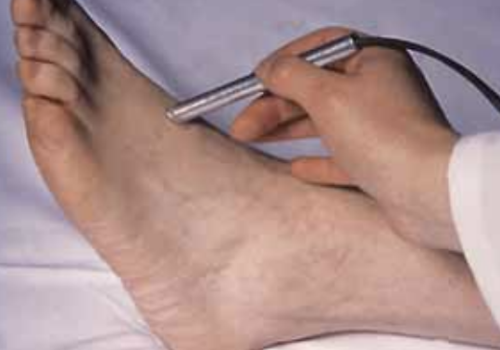All patients with cardiovascular disease (CVD) should be offered drug treatment to reduce their cholesterol levels without waiting for the management of modifiable risk factors, recommends the latest guidance on lipid modification from the National Institute for Health and Clinical Excellence (NICE). The much-anticipated guideline finally puts to bed the ‘5 and 3’ or ‘4 and 2’ debate over cholesterol levels for primary and secondary prevention. In this article, we review what the guidance says about lipid lowering in secondary prevention.
Making sense of type 1 diabetes in primary care
Primary care has traditionally managed people with type 2 diabetes, and people with type 1 diabetes have largely been the responsibility of secondary care. However, as blood glucose targets have become tighter and growing numbers of people with type 2 diabetes have started to require insulin, many in primary care have gradually taken on insulin management. As primary care professionals become more confident in the management of patients on insulin, many practices will be keen to take on the challenge of type 1 patients. This article looks at how type 1 differs from type 2 diabetes, which type 1 patients might be managed appropriately in primary care, and recaps on insulin regimens and dose adjustment.
Looking after women with diabetes during pregnancy
The care of pre-existing diabetes during pregnancy is complex and the remit of secondary care, but much can be done by primary care staff to ensure that pregnant women and their babies are safely on the right track by the time pregnancy is confirmed. In this article, we explore how to provide women with pre-existing diabetes with detailed and accurate preconceptual advice. Work needs to begin before contraception is discontinued to significantly reduce the risks for both mother and baby. In women with gestational diabetes, practice nurses can also be proactive postnatally, preventing progression to type 2 diabetes.
Starting on a sulphonylurea
Wholegrains: sorting out the wheat from the chaff
The seeds of cultivated cereal crops, or grains as they are also known, have been used as a staple of man’s diet for thousands of years. Indeed the cultivation of rye, the first cereal crop from around 10,000 BC, is credited with enabling our hunter-gatherer ancestors to form more settled, complex civilisations. Throughout most of our history we’ve eaten these grains “whole” in the form of unpolished rice or wholewheat flour, for example. It’s only in last 120 years or so that more refined milling techniques have enabled the white or refined forms of these cereal crops to become the preferred choice in much of western society. What impact does this change have for our health?
Hands on peripheral arterial disease
Peripheral arterial disease (PAD), also known as peripheral vascular disease (PVD), is a vascular condition which affects the legs. It is caused by atherosclerosis – narrowing and hardening of the arteries – and has previously been described as being similar to angina in the legs. Sufferers get cramping pains in their legs when they walk, which is relieved by rest. This is similar to the chest pain that occurs in people with coronary heart disease (CHD). The similarities between CHD and PAD do not end there: the causes and treatments also overlap. In this article, we explore how two patients presented with symptoms suggestive of PAD and how they were treated.
Using neurolinguistic programming to help patients achieve their goals
How can you help patients to achieve their goals when trying to improve their health? In this article, we explore the neurolinguistic programming (NLP) technique of defining “keys to an achievable outcome”. The theory is that the more specific you are about the goal you are aiming for, the more achievable it becomes. This follows two articles in previous issues where we examined how to develop rapport with patients using linguistics and body language effectively (see www.bjpcn.com if you missed them).
Aliskiren: the first direct renin inhibitorxfor hypertension
Aliskiren (Rasilez) is the first in a new class of medicines – the direct renin inhibitors – to treat high blood pressure to become available in more than a decade. In this article we review how aliskiren works, what makes it different from other drugs acting on the reninangiotensin system (RAS), its efficacy and tolerability and its likely place in the management of hypertension.
Optimising your patients’ recovery after stroke
Around 150,000 people in the UK have a stroke every year, according to the Stroke Association. Most people affected are over 65, but younger people can have a stroke. Stroke is the third most common cause of death in the UK and is also an important cause of disability, with more than 250,000 people left disabled following a stroke. The recent National Stroke Strategy for England set out a quality framework to improve stroke services. In this article, we review what we can do to help optimise outcomes for our patients who have a stroke.
Building rapport with patients: actions speak louder than words
The use of language is obviously very important in effective communication, and gives important clues as to how people make sense of the world around them, and how they understand their experiences, as we saw in an introduction to neurolinguistic programming (NLP) in the last issue of BJPCN. In this article, we will look at how to use effective body language and non-verbal communication to its fullest extent in the clinic setting.
Starting on your GTN tablets or spray
GTN (glyceryl trinitrate) in tablet or spray form is used for the immediate relief of chest pain due to angina. The tablets have a short shelf-life and should be thrown away eight weeks after opening the bottle. The spray lasts longer, but you need to check the expiry date on the bottle. Angina is a […]
Putting prevention first: the new vascular risk assessment programme
Everyone between 40 and 74 years of age is to be offered checks for vascular disease as part of the new Putting Prevention First programme. The aim is to identify vulnerability to vascular diseases, with the goal of preventing up to 9,500 heart attacks and strokes and saving 2,000 lives every year. Who will this programme target, and what will we need to do to put it into action?
























